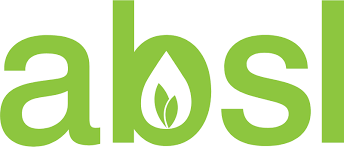Information
-
Investigation No;
-
Investigation Title;
-
Site / Location
-
Investigation commenced on:
-
Report Prepared by:
-
Location
-
Personnel involved in investigation;
Investigation Process
-
Once notification of an accident or incident is received you are ready to undertake an investigation, the purpose of the investigation should be to;
a) Identify the system which failed;
b) Examine the system for problems;
c) Identify the root cause of the accident/incident.
You can use the checklist below as you go about your investigation. -
Investigation Process Checklist
-
Collect Initial Data
-
Collect Information about management systems.
-
Collect information regarding Physical Controls.
-
Collect information regarding behaviours.
-
Examine worksite.
-
Identify personnel involved.
-
Identify equipment involved.
-
Interview Staff/Witnesses.
-
Examine documentation.
-
Examine training records.
-
Examine Health & Safety inspection reports.
-
Conduct any required tests.
-
Notes
Root Cause Description
-
The root cause of any accident/incidents is the most basic cause that can reasonably be identified and management had the control to fix.
Root Cause Analysis will;
Identify the system that failed;
Map the system to causation;
Identify the management failure;
Identify the root cause.
There are usually only Four Possibilities:
1. No system in place;
2. There is a system however, the System is poorly defined;
3. The defined System is adequate but was not correctly implemented;
4. System defined but not implemented at all.
Events
-
Here you need to Depict Events using the five "W's" = (who, what, why, where, when) and identify the following;
-
Causal Factors
-
Factual Evidence
-
Add media if relevant.
-
Relationships
-
Develop an Events & Causation chart using recognised technique.
eg - fish bone, fault tree, FMEA etc. -
Draw Chart
-
Get chart
-
Identify system which failed.
-
Examine the system for problems.
Management Controls
-
Policy
-
Was a Policy in place?
-
Was the policy adequate?<br>
-
Planning
-
Was there a plan in place?
-
Was the plan implemented?
-
Was the plan adequate?
-
Control
-
Who is responsible for the standard?
- Organisation
- Management
- Supervision
- Operative
-
Was the responsibility re-assigned?
-
Who to?
-
Was it in accordance with the standard?
-
Competence
-
Is there a required standard?
-
Was the standard adequate?
-
Was the person/person competent?
-
Why was the person not competent?
-
Implementation
-
Was the system specified?
-
Was the system adequate?
-
Was the system implemented?
-
Was the system implemented to the required standard?<br>
-
Communication
-
Was the system communicated?
-
Was the communication adequate?
-
Was it in line with the standard?
-
Cooperation
-
Was a standard specified?
-
Was it adiquate?
-
Was there cooperation?
-
Measuring
-
Was there a standard for measuring the system?
-
Was it effective?
-
Were the measures in line with the standard?
-
Reviewing
-
Was there a system for reviewing?
-
Was the system for reviewing adequate?
-
Was the system reviewed?
-
Were any reviews in line with the standard?
-
Were any reviews in line with the standard?
Root Cause
-
Root Cause
Remember The root cause is the most basic cause that can reasonably be identified and management had the control to fix. -
No system in place. There is nothing in place to address this particular risk.
-
System is adequate but not correctly implemented. There is a system defined, but this is not what was implemented.
-
System is poorly defined. The system to address the risk has been implemented but it is poorly conceived.
-
System defined but not implemented at all. There is a system defined but has not been implemented at all.
-
This assumes that a system is adequately defined in the first place and if it had been implemented properly then it will not be the root cause.
-
Conclusion
-
Investigation concluded.
-
Investigation conducted by:












